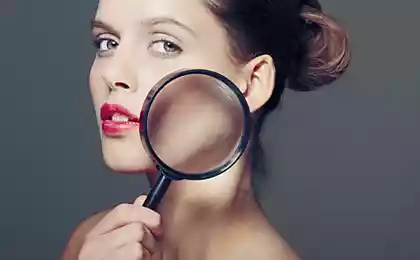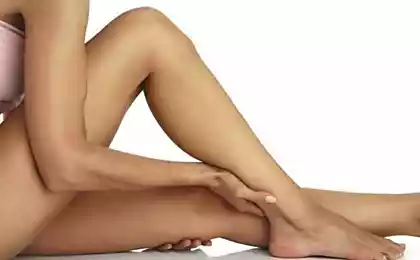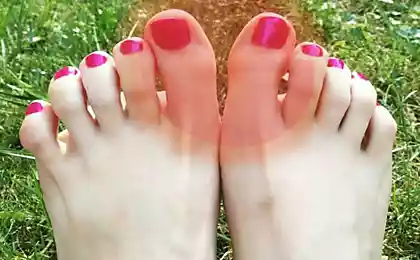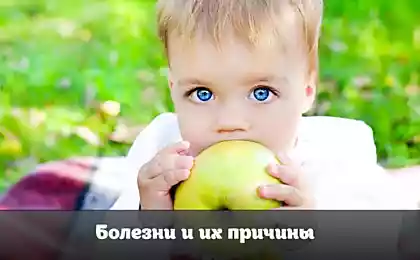163
First aid for domestic burns
Each of us at least once in his life became a victim of ill-fated burns: at home, pouring boiling water or hot oil, at work, ignoring safety rules, or simply because of the inattention of others. The reasons are many, but the effect is the same: unbearable pain, redness, blisters, and in some cases shock and a real threat to life.
Timely assistance during a burn is precious seconds, on which the further fate of the victim largely depends!
710853.
"Site" will tell How to provide first aid for burns promptly and efficiently to prevent the likely consequences of an accident. Do not lose your head and act according to the instructions to help yourself (even if it is very painful) or save a friend!
The severity of the burn depends not only on the substance that provoked it, but also on the area of skin and tissue damage. Burn is always the strongest pain, and in severe cases - painful shock. Burn can be aggravated by the accession of infection, the penetration of toxins into the bloodstream, metabolic disorders and threaten death. No matter how light or, conversely, severe the burn, you need to act immediately!

Burn with boiling water or steam Due to haste or due to inattention, such a household injury as a burn with boiling water or steam happens to almost everyone. And the hotter the liquid was and the longer its contact with the skin, the more deplorable the consequences were. Most often, such a burn is exposed to the hands and forearms, less often the thighs, feet, chest and abdomen.
First aid
What not to do

Burning hot sunflower or butter is not uncommon in any kitchen. And if a couple of drops of boiling oil almost do not harm, then it is not so easy to get rid of an impressive burn. Hot oil burn. It is characterized by a special degree of danger, because oily substances very quickly and deeply penetrate the skin and destroy it from the inside.
Getting on the skin, hot oil creates a kind of film on the surface, which does not allow the skin to cool naturally. It is because of the thermal insulation properties of oils that none of the thermal burns can be treated with them!
First aid
What not to do

Chemical burns occur not only at work, but also at home. Acute alkalis and acids, salts of heavy metals, household cleaning products - all this can damage the skin in violation of safety during work with them.
First aid
What not to do

Burn is one of the most dangerous types of traumatic eye injuries, and the consequences of such an injury can be irreparable. In everyday life, the most dangerous substances are vinegar and alkali, hot milk and boiling water, oil and steam. Any burns can lead to a decrease and even loss of vision, so you need to act immediately!
First aid
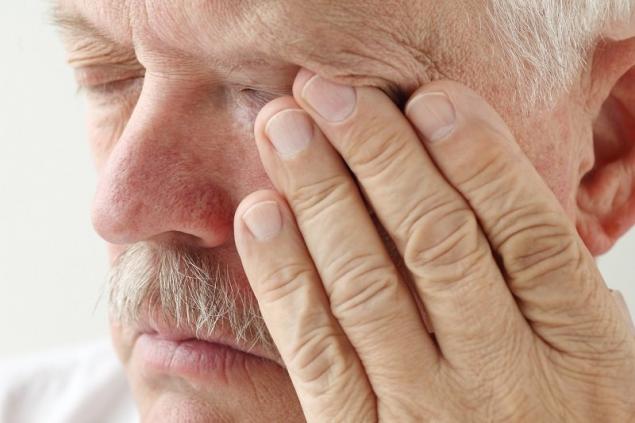
Who among us didn’t burn in the sun? Whatever it was, sunburn can be extremely dangerous, and the recovery of the skin after injury is very long. From mild redness to blisters and loss of consciousness, sunburn needs immediate treatment!
First aid
What not to do
631232
Do not forget that burns, even small ones, reduce the volume of circulating blood, so you need to drink as much as possible! And not just water, but something sweet and warm, such as tea or compote.
And, most importantly, you need to give up your grandmother’s money! Eggs, oil, sour cream and advice to urinate at the site of a burn will not only not help, but also slow down healing and prevent doctors who will provide first aid. Even if these methods worked with your grandmother, great-grandmother, neighbor, or colleague, don’t do that.
Write down, save, remember and do not forget to share with friends - no one is insured from an accident! We will remind, earlier we told how to provide first aid for fainting and quickly bring a person to his senses. They also wrote how to recognize a heart attack, stroke, epileptic seizure and provide first aid if a disaster occurred.
Timely assistance during a burn is precious seconds, on which the further fate of the victim largely depends!
710853.
"Site" will tell How to provide first aid for burns promptly and efficiently to prevent the likely consequences of an accident. Do not lose your head and act according to the instructions to help yourself (even if it is very painful) or save a friend!
The severity of the burn depends not only on the substance that provoked it, but also on the area of skin and tissue damage. Burn is always the strongest pain, and in severe cases - painful shock. Burn can be aggravated by the accession of infection, the penetration of toxins into the bloodstream, metabolic disorders and threaten death. No matter how light or, conversely, severe the burn, you need to act immediately!

Burn with boiling water or steam Due to haste or due to inattention, such a household injury as a burn with boiling water or steam happens to almost everyone. And the hotter the liquid was and the longer its contact with the skin, the more deplorable the consequences were. Most often, such a burn is exposed to the hands and forearms, less often the thighs, feet, chest and abdomen.
First aid
- It is necessary to immediately eliminate the irritant factor - water or steam. The main thing is not to panic and react quickly.
- If the damage is minor, and the area of the burn is small, you can cool the burn site with running water. The procedure should take at least 15-20 minutes, and the water should not be icy.
- It is allowed to close the affected area with a dry sterile dressing and ensure peace.
- If the injury is causing pain, any painkiller (oral!) or nonsteroidal anti-inflammatory drug will help.
What not to do
- With severe burns, it is strictly forbidden to tear clothes from the wound if it is stuck.
- Do not touch the wound with your hands.
- Do not apply ointments, creams, sour cream, oil and other "grandmother" means to the affected area. That way, you'll make things worse and you'll spread the infection.
- Do not apply snow, ice or wash with ice water.
- Do not treat the damaged area of the skin with irritating antiseptics - iodine, peroxide, alcohol and so on.
- Don't puncture the bubbles!

Burning hot sunflower or butter is not uncommon in any kitchen. And if a couple of drops of boiling oil almost do not harm, then it is not so easy to get rid of an impressive burn. Hot oil burn. It is characterized by a special degree of danger, because oily substances very quickly and deeply penetrate the skin and destroy it from the inside.
Getting on the skin, hot oil creates a kind of film on the surface, which does not allow the skin to cool naturally. It is because of the thermal insulation properties of oils that none of the thermal burns can be treated with them!
First aid
- Immediately remove the oil layer with a paper napkin.
- Wash the wound under a stream of cold running water for 15-20 minutes. This will help cool the burned tissue, relieve irritation and stimulate tissue regeneration.
- If the burned place can not be washed, carefully release it from clothing and cooling with a special aerosol or gel.
- If a bubble with liquid has formed on the skin, in no case should it be pierced.
- With severe pain syndrome, you can take an anesthetic drug.
What not to do
- Do not wash the burn with water immediately - first remove the remains of the oil with a dry wipe.
- Do not use burn remedies (panthenol, for example) without proper first aid.
- In no case should you urinate on a burn, smear it with cream, chicken protein, soap or other folk remedies.

Chemical burns occur not only at work, but also at home. Acute alkalis and acids, salts of heavy metals, household cleaning products - all this can damage the skin in violation of safety during work with them.
First aid
- The first and most important thing is to get rid of the irritant and cool the place of the burn. Therefore, the affected area should be placed under a stream of cold water for 15-20 minutes. By the way, the affected area should be washed so as not to touch the healthy skin around (prevent the spread of the chemical agent).
- The chemical must be neutralized: the acid with alkali, and the alkali with acid. If the injury occurred in everyday life, with an acid burn, the lesion can be treated with soda or washed with soapy water, and when burned with alkali, the affected area is best washed with diluted acetic acid.
- After neutralizing the agent, a sterile dry dressing can be applied.
What not to do
- Do not apply compresses, do not treat the affected area with oil and any other substances except water (or counterparty), do not apply wet dressings.
- Chemicals tend to penetrate the deep layers of the skin, so they can continue to act even after visible removal. To prevent an increase in the area of the burn, do not touch it with your hands.
- With a high degree of damage, you should immediately consult a doctor!

Burn is one of the most dangerous types of traumatic eye injuries, and the consequences of such an injury can be irreparable. In everyday life, the most dangerous substances are vinegar and alkali, hot milk and boiling water, oil and steam. Any burns can lead to a decrease and even loss of vision, so you need to act immediately!
First aid
- If poisonous liquid gets into the eye, wash it with cold water as soon as possible and thoroughly. What is important, it should be done not 10, or even 15 minutes, but for 30-40 minutes. This will get rid of the chemical agent that has entered the conjunctival cavity.
- Then you can wash your eyes with tea brewing at room temperature. Tea is rich in disinfectants and tannins, because it will help relieve acute pain.
- A cool tea compress will also be effective.
- Remember that any form of eye burn requires immediate contact with an ophthalmologist!

Who among us didn’t burn in the sun? Whatever it was, sunburn can be extremely dangerous, and the recovery of the skin after injury is very long. From mild redness to blisters and loss of consciousness, sunburn needs immediate treatment!
First aid
- The first thing to do is to immediately leave the sun in a cool place, such as hiding in the shade.
- A wet cold bandage can be applied to the burned place, it will help cool the affected area and relieve pain.
- You can take a cold shower or lie down in a cool bath.
- If you experience severe headache, dizziness, nausea, you should immediately consult a doctor! These symptoms may indicate the development of heat stroke.
- A pill of paracetamol or any non-steroidal anti-inflammatory agent will help relieve painful symptoms and relieve fever.
What not to do
- In no case should you apply ice cubes to the burned skin. Also, you should not wash the damaged areas with soap, rub with a washcloth and clean with scrubs - this will only increase the inflammatory reaction.
- You can not treat damaged skin with Vaseline and other fatty products. They clog pores and disrupt the processes of natural thermoregulation.
- If an unsuccessful tan caused not only redness, but also bubbles, the latter in any case should not be pierced or peeled.
- During recovery, you can not be under direct sunlight (you can only in closed clothes) and sunbathe.
- You can not also take alcohol, coffee and drink strong tea - this can contribute to dehydration.
631232
Do not forget that burns, even small ones, reduce the volume of circulating blood, so you need to drink as much as possible! And not just water, but something sweet and warm, such as tea or compote.
And, most importantly, you need to give up your grandmother’s money! Eggs, oil, sour cream and advice to urinate at the site of a burn will not only not help, but also slow down healing and prevent doctors who will provide first aid. Even if these methods worked with your grandmother, great-grandmother, neighbor, or colleague, don’t do that.
Write down, save, remember and do not forget to share with friends - no one is insured from an accident! We will remind, earlier we told how to provide first aid for fainting and quickly bring a person to his senses. They also wrote how to recognize a heart attack, stroke, epileptic seizure and provide first aid if a disaster occurred.







